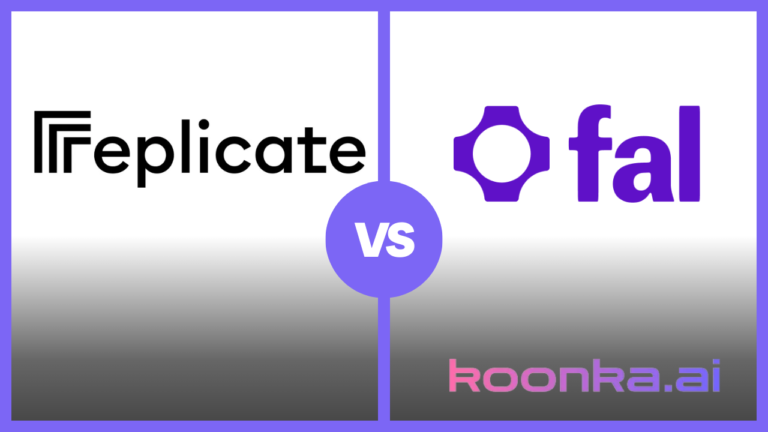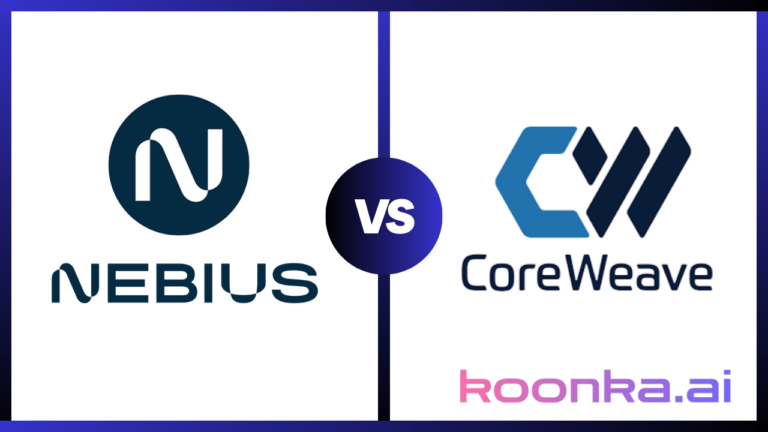CoreWeave vs Crusoe: Which Cloud Provider Reigns Supreme?

When it comes to cloud GPU providers, CoreWeave and Crusoe stand out as two formidable options, each bringing unique strengths to the table. As businesses increasingly rely on GPU-accelerated workloads for AI, machine learning, and high-performance computing (HPC), choosing the right provider becomes critical. CoreWeave boasts a Kubernetes-native infrastructure designed for large-scale enterprise needs, offering impressive speed and cost efficiency.
On the other hand, Crusoe excels in versatility, catering to a broad range of workloads with cutting-edge NVIDIA AI enterprise GPUs. In this CoreWeave vs Crusoe comparison, we’ll dive deep into what sets these two providers apart, helping you make an informed decision on which one best suits your specific requirements. Whether you’re focused on cost, performance, or infrastructure, we’ve got you covered.
Affiliate Disclosure
We prioritize transparency with our readers. If you purchase through our affiliate links, we may earn a commission at no additional cost to you. These commissions enable us to provide independent, high-quality content to our readers. We only recommend products and services that we personally use or have thoroughly researched and believe will add value to our audience.
Table of Contents
GPU Compute Comparison
When it comes to GPU cloud providers, CoreWeave and Crusoe stand out with their impressive range of NVIDIA chips, offering powerful solutions tailored for AI, machine learning, and high-performance computing (HPC). Both providers have built infrastructures designed to handle the most demanding workloads, but their approaches and offerings differ in ways that could be crucial depending on your specific needs. Let’s break down what each provider brings to the table, so you can decide which one fits your GPU compute requirements.
Looking for flexible GPU cloud services? Explore CUDO Compute for scalable solutions tailored to your AI and HPC needs.
To learn more about CUDO Compute, kindly watch the following video:
CoreWeave: A Wide Selection of High-End GPUs
CoreWeave takes pride in offering one of the broadest selections of NVIDIA GPUs in the industry, catering to a variety of compute-intensive tasks. Their offerings include over 10 different NVIDIA GPU models, making it easier for users to “right-size” their workloads for optimal performance and cost efficiency.
Key GPU Offerings from CoreWeave
- NVIDIA HGX H100 & H200:
- H100: Designed for large-scale HPC and AI workloads, the H100 features fourth-generation Tensor Cores and a Transformer Engine with FP8 precision. This allows for up to 4X faster training over prior generations, making it ideal for massive AI models like GPT-3. The H100 also boasts 7X better efficiency in HPC applications, making it a top choice for large-scale projects.
- H200: This GPU offers up to 5.5X faster fine-tuning and 1.9X greater LLM inference performance compared to the H100. It’s specifically designed for generative AI and large language models (LLMs), making it perfect for advanced AI workloads.
- NVIDIA A100:
- Available in both SXM and PCIe forms, the A100 is versatile, handling everything from AI training to data analytics. The SXM version offers third-generation NVLink with 600GBps of GPU-to-GPU interconnect, while the PCIe version provides a cost-effective solution for both training and inference.
- NVIDIA A40 and L40S:
- These GPUs are designed for visual computing, scientific visualization, and simulation. The A40 is optimized for AI inference, HPC, and professional graphics, while the L40S offers enhanced performance for generative AI and graphics workloads.
CoreWeave’s infrastructure is built for large-scale, elastic, real-time consumption, which means you can provision GPUs on demand. This flexibility, combined with transparent pricing and intuitive billing, allows for significant cost savings—up to 80% compared to traditional cloud providers like Microsoft Azure and IBM Cloud.
Crusoe: Optimized Compute Instances for AI and HPC
Crusoe focuses on providing specialized compute instances powered by NVIDIA’s latest chips. Their offerings are tailored for the most demanding AI and HPC workloads, ensuring high performance and efficiency.
Key GPU Offerings from Crusoe
- NVIDIA H100 Tensor Core GPU:
- Like CoreWeave, Crusoe also offers the H100, but they emphasize its use for distributed training and inference in challenging AI workloads. The H100 at Crusoe energy is paired with NVIDIA Quantum-2 InfiniBand, enabling 3,200Gbps between servers, which is crucial for large-scale, multi-GPU training.
- NVIDIA A100 SXM and PCIe:
- Crusoe offers both the SXM and PCIe versions of the A100, with the SXM model featuring 600GBps of GPU-to-GPU interconnect through third-generation NVLink. This is perfect for AI and data analytics at any scale. The PCIe version offers a great balance of price and performance, ideal for scientific computing and AI inference.
- NVIDIA L40S and A40:
- The L40S at Crusoe provides top-notch AI and graphics performance for a data center, handling generative AI tasks with ease. The A40, on the other hand, is tailored for visual computing and professional graphics, making it a solid choice for applications like ray-traced rendering and scientific simulation.
Crusoe’s infrastructure is optimized for AI and HPC, offering significant GPU computing power across their data centers. They highlight their use of natural gas-powered data centers, which not only reduce carbon emissions but also enable them to offer competitive pricing.
Need powerful GPUs with transparent pricing? Discover CUDO Compute’s offerings and optimize your workloads.
GPU Compute Power: CoreWeave vs Crusoe
When comparing the GPU compute offerings of CoreWeave and Crusoe, it’s clear that both providers are equipped to handle heavy AI workloads and deep learning models. However, there are distinct advantages to each, depending on the specific needs of your project.
NVIDIA HGX H100 & H200: CoreWeave’s Edge in Large-Scale AI
CoreWeave’s deployment of NVIDIA HGX H100 and H200 GPUs gives them a significant edge in handling large-scale AI workloads and HPC applications. The H200, with its higher performance in LLM inference and fine-tuning, is particularly appealing for businesses focused on cutting-edge AI model development. The availability of these GPUs at a supercomputer scale, combined with CoreWeave’s non-blocking GPUDirect fabrics built with NVIDIA InfiniBand technology, ensures maximum performance and efficiency for multi-GPU training.
NVIDIA A100: A Common Ground
Both CoreWeave and Crusoe offer the A100 GPU, making it a versatile option for AI training, inference, and HPC tasks across both platforms. Whether you need the SXM version for higher interconnect speeds or the PCIe version for cost-effective computing power, the A100 provides consistent performance.
L40S and A40: Catering to Graphics and Visualization
For workloads involving graphics, visualization, and simulation, both providers offer the NVIDIA L40S and A40 GPUs. Crusoe’s L40S may offer slightly better performance for graphics-intensive tasks, while CoreWeave’s flexible deployment options make it easier to switch between GPU configurations depending on your needs.
Deployment and Infrastructure: How They Stack Up
While both CoreWeave and Crusoe provide top-tier Cloud GPUs, their deployment models and infrastructure set them apart.
CoreWeave’s Kubernetes-Native Infrastructure
CoreWeave’s Kubernetes-native infrastructure is designed for large-scale, real-time consumption. This setup reduces overhead and management complexity, making it easier for businesses to scale their AI workloads without worrying about infrastructure bottlenecks. Their focus on Kubernetes also enables better portability and faster deployment times, which is crucial for projects that need to pivot quickly.
Crusoe’s Specialized Infrastructure for AI and HPC
Crusoe’s infrastructure is optimized for AI and HPC, with a focus on NVIDIA’s latest GPU clouds technology. Their use of natural gas-powered data centers adds an element of sustainability to their offering, which could be a deciding factor for environmentally-conscious businesses. Additionally, Crusoe’s emphasis on high GPU-to-GPU and server-to-server interconnect speeds makes them a strong contender for projects requiring fast, distributed computing.
Cost Efficiency: Who Offers Better Value?
Cost is always a critical factor when choosing between GPU cloud providers. CoreWeave highlights savings of up to 80% compared to legacy cloud providers like Microsoft Azure and IBM Cloud. Their transparent pricing and configurable instances make it easier to optimize your spending, especially for large-scale projects.
Crusoe, while not as explicit about their cost savings, leverages their natural gas-powered data centers to offer competitive pricing. The combination of high-performance GPUs and efficient energy use could translate into significant cost savings, particularly for long-term, resource-intensive projects.
Making the Right Choice
Choosing between CoreWeave and Crusoe comes down to the specific needs of your project. If you require a broad selection of GPUs with flexible deployment options and Kubernetes-native infrastructure, CoreWeave might be the better choice. On the other hand, if your focus is on AI and HPC workloads with a need for high interconnect speeds and sustainable practices, Crusoe offers a compelling alternative.
Both providers stand out among GPU cloud providers, but understanding the nuances of their offerings will help you make the best decision for your AI models, deep learning projects, or any other compute-intensive tasks. Whether you prioritize cost efficiency, computing power, or sustainability, both CoreWeave and Crusoe have the tools to support your goals.
Enhance your AI projects with CUDO Compute’s high-performance GPUs. Start scaling your applications today here.
CPU Compute & Storage:
When it comes to choosing the right service for CPU computing and storage, both CoreWeave and Crusoe present strong offerings. Each has its strengths, making the decision dependent on your specific needs. This comparison will delve into the details of both providers to help you make an informed decision.
CPU Compute:
CoreWeave
CoreWeave excels in scalability, offering on-demand access to hundreds of thousands of CPU cores. This makes it ideal for tasks requiring large-scale computing, such as final-frame rendering or massive data analysis. Their CPU compute options are flexible, with instances starting at $0.0125 per vCPU per hour.
CoreWeave’s infrastructure is built to handle general-purpose computing without GPU acceleration. The company provides several CPU models, including AMD Epyc and Intel Xeon processors, tailored to different performance needs. For those requiring peak performance, AMD Epyc Milan and Rome, as well as Intel Xeon Scalable CPUs, are available, starting at $0.03 per vCPU per hour. These CPUs are optimized for latency-sensitive applications, with clock speeds exceeding 3.2GHz.
For more budget-conscious users, CoreWeave offers Intel Xeon v3 and v4 CPUs, starting at $0.0125 and $0.02 per vCPU per hour respectively. These models provide a solid balance of performance and cost, making them suitable for a wide range of applications, including batch workloads and general-purpose computing.
CoreWeave’s flexibility shines in its ability to scale workloads seamlessly. Whether you’re running containerized micro-services or highly configurable virtual servers, CoreWeave’s control-plane makes managing your CPU workloads straightforward.
Crusoe
Crusoe, on the other hand, offers general-purpose and storage-optimized CPU instances. Their general-purpose instances are well-suited for workloads such as Kubernetes controllers, SLURM head nodes, and web-serving tasks. Crusoe’s pricing starts at $0.04 per vCPU per hour for on-demand instances, with discounts available for reserved instances, dropping as low as $0.026 per vCPU per hour for a three-year commitment.
Crusoe’s storage-optimized instances are designed for high-performance file systems and large-scale object stores. These instances are more expensive, starting at $0.09 per vCPU per hour, but they are specifically optimized for storage-intensive tasks, making them a great choice for workloads that require high throughput and low latency.
While CoreWeave provides a wider range of CPU models, Crusoe’s focus on storage-optimized instances might appeal to those with specific storage needs. Crusoe’s general-purpose instances are competitively priced, particularly for long-term commitments, which could be beneficial for businesses looking to lock in lower costs.
Searching for cost-effective CPU services? Check out CUDO Compute’s competitive options for demanding tasks.
Storage:
CoreWeave
CoreWeave’s storage solutions are versatile and secure, catering to various workloads. They offer block storage, shared file systems, and object storage, all of which can be accessed via containers and virtual servers. This flexibility allows users to manage storage separately from compute, making it easier to adjust compute resources without affecting storage.
CoreWeave’s storage is distributed and fault-tolerant, ensuring high availability. Their pricing is straightforward, with block storage starting at $0.04 per GB per month, file system storage at $0.07 per GB per month, and object storage at $0.03 per GB per month. CoreWeave does not charge for data transfer or egress, which can lead to significant cost savings, especially for data-heavy applications.
One of CoreWeave’s standout features is the ability to scale storage capacity from as little as 1GB to petabyte-scale volumes. This scalability, combined with instant cloning of volumes, makes CoreWeave’s storage solution particularly appealing for businesses with growing data needs.
Crusoe
Crusoe’s storage offerings are designed for performance and durability. They provide persistent disks, which are attached to instances over a high-performance storage network, ensuring consistent, non-blocking data throughput. These disks are replicated within zones, offering high availability and durability, which is crucial for mission-critical applications.
Crusoe also offers ephemeral disks, which are physically installed on servers. These disks provide the highest throughput and lowest latency, making them ideal for sensitive workloads that require fast data access.
For storage-optimized instances, Crusoe supports high-performance file systems like LUSTRE, Ceph, and BeeGeeFS, as well as object stores like Minio. These instances can be scaled vertically, offering up to 96TB of local NVMe storage, with additional capacity available through attached persistent disks.
Crusoe’s storage pricing is uniform across all tiers, at $0.08 per GB per month. While this is higher than CoreWeave’s starting prices, Crusoe’s focus on high-performance and durable storage solutions might justify the cost for applications that demand top-tier storage capabilities.
Choosing the Right Service
The decision between CoreWeave and Crusoe depends largely on your specific use case.
If you prioritize flexibility, scalability, and cost-effectiveness, CoreWeave might be the better choice. Their wide range of CPU options, transparent pricing, and versatile storage solutions make them suitable for a broad spectrum of applications, from general-purpose computing to large-scale data analysis.
However, if your focus is on high-performance storage and you are willing to invest more in optimized storage solutions, Crusoe could be the right fit. Their storage-optimized instances and durable persistent disks offer robust performance for storage-intensive workloads, making them ideal for industries where data throughput and low latency are critical.
Both CoreWeave and Crusoe offer strong CPU computing and storage services, but their differences in pricing, scalability, and performance optimization make them suited to different needs. Consider your workload requirements, budget, and performance goals when choosing between these two providers.
Networking:
When evaluating networking capabilities, both CoreWeave and Crusoe offer robust and high-performance solutions, though their approaches and features differ slightly to cater to various user needs. Here’s a closer look at how they compare.
CoreWeave
CoreWeave’s networking is built for modern, high-performance demands. Their architecture supports over 100Tbps with a decentralized design, allowing for seamless horizontal scaling of workloads. This makes CoreWeave an excellent choice for applications that require massive data throughput and low latency.
CoreWeave’s Kubernetes-native network design is a significant advantage for users looking to simplify network management. By integrating functionality into the network fabric, CoreWeave reduces the need for extensive IP and VLAN management, allowing users to focus more on their workloads. For those who need traditional networking setups, CoreWeave offers a Virtual Private Cloud (VPC) that gives users full control over Layer 2 networking environments.
Public internet connectivity with CoreWeave is robust, offering up to 100Gbps per node through multiple global Tier 1 providers. This ensures low latency access, especially in the U.S., where CoreWeave optimizes regional transit providers.
One of CoreWeave’s standout features is its pricing model, which doesn’t charge for data transfers or egress. This can be a significant cost saver for businesses with high data movement needs. Additionally, CoreWeave provides load balancer services at no extra cost, enhancing the scalability and availability of applications.
Crusoe
Crusoe’s networking solutions focus on high performance, particularly within their VPC networks. They offer fully non-blocking Ethernet fabric within each zone, ensuring high-performance instance-to-instance communication and ample bandwidth to the public internet. This setup is ideal for users who require reliable and fast internal networking.
Crusoe also supports InfiniBand networks, providing the highest throughput and lowest latency for GPU RDMA, especially for NVIDIA A100 and H100 Tensor Core GPUs. This makes Crusoe a strong choice for workloads that involve heavy GPU usage, such as AI and machine learning tasks. Users can configure their network partitions for multi-tenancy without needing to submit support requests, offering a user-friendly experience.
Crusoe’s VPC firewall rules offer fine-grained control over network access, which can be particularly beneficial for security-conscious users. These rules allow seamless management of network access while maintaining strict control over which ports are exposed to the public internet.
Choosing the Right Networking Solution
CoreWeave’s networking is ideal for those who need scalable, high-throughput networking with transparent pricing and robust public and private networking options. The integration with Kubernetes and the absence of data transfer fees add to its appeal for modern cloud-native applications.
Crusoe, on the other hand, shines with its high-performance internal networking and support for InfiniBand, making it a top choice for GPU-heavy workloads and environments that demand ultra-low latency. The customizable VPC and firewall rules also provide a high degree of control and security.
Your choice will depend on your specific networking needs—whether you prioritize cost-effectiveness and scalability with CoreWeave or high performance and control with Crusoe.
For advanced networking solutions, explore CUDO Compute. Get started with their reliable infrastructure here.
CoreWeave vs Crusoe: Conclusion
When it comes to GPU services, CoreWeave and Crusoe both excel, but they offer different strengths that could make one a better fit for your specific needs.
CoreWeave provides one of the broadest selections of NVIDIA GPUs in the market. With options like the NVIDIA HGX H100 and H200, they’re particularly well-suited for large-scale AI workloads and high-performance computing (HPC). The H100 is ideal for tasks that require massive computational power, such as training large AI models, while the H200 offers even greater performance for fine-tuning and large language models (LLMs).
Additionally, CoreWeave’s infrastructure is Kubernetes-native, allowing for seamless deployment and scaling, which makes managing AI workloads more efficient. The flexibility in GPU choices and transparent pricing gives users the ability to optimize both performance and costs, making CoreWeave an excellent choice for those looking for versatility and scalability.
On the other hand, Crusoe focuses on delivering high-performance GPU instances optimized for AI and HPC. Their offerings include the NVIDIA H100 and A100 GPUs, with the added advantage of NVIDIA Quantum-2 InfiniBand technology, providing 3,200Gbps between servers. This makes Crusoe a strong contender for projects that require fast, distributed computing. Additionally, Crusoe’s use of natural gas-powered data centers is a standout feature for businesses prioritizing sustainability. While their GPU selection is slightly narrower than CoreWeave’s, the emphasis on energy efficiency and high interconnect speeds offers a significant edge for environmentally-conscious companies working on large-scale AI projects.
If your project requires a wide selection of GPUs, flexible deployment options, and the ability to scale quickly, CoreWeave is the superior choice. Their comprehensive GPU offerings and robust infrastructure make them ideal for a range of AI and HPC tasks. However, if sustainability and ultra-fast interconnect speeds are more critical to your project, Crusoe offers a specialized, eco-friendly alternative that’s hard to overlook. Ultimately, CoreWeave stands out as the more versatile and scalable option for most GPU-intensive workloads.
Maximize your computing power with CUDO Compute. Learn more about their GPU services here.







